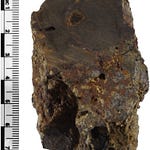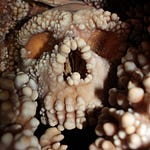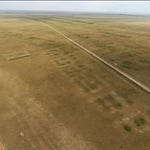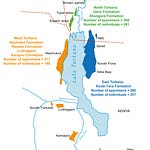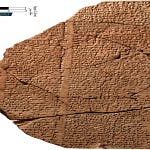Reconsidering the Prehistoric Dead of Northwest Africa
For decades, the prehistoric heritage of North Africa has lived in the shadow of its pharaonic and Roman successors. The sands of Egypt and ruins of Carthage dominate popular and scholarly imagination alike. But what if we turned west, to the windswept ridges and limestone caves of the Tangier Peninsula, where ancient communities carved their beliefs into rock, built cemeteries atop hills, and placed standing stones in deliberate alignment with terrestrial crossroads?
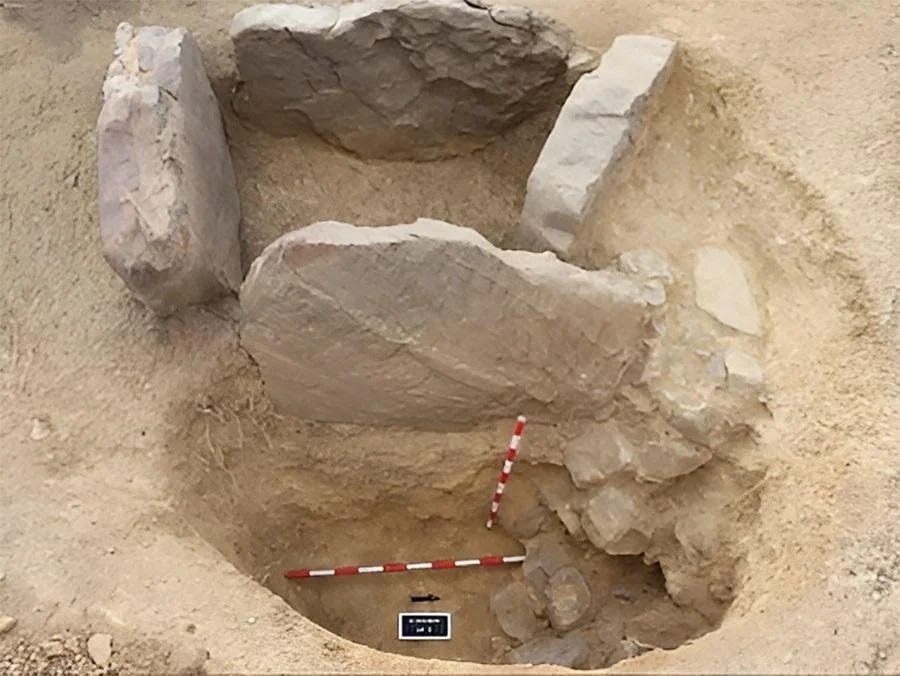
Recent work by Hamza Benattia, Jorge Onrubia-Pintado, and Youssef Bokbot sheds new light on the complex ritual life of this region between 3000 and 500 BCE. Their study, published in African Archaeological Review1 combines GIS mapping, radiocarbon analysis, and field excavation to reveal a dense mosaic of funerary monuments, symbolic structures, and art. It's a reminder that the Tangier Peninsula was not a cultural periphery but a hub of prehistoric innovation.
"It is a sad reality that the later prehistoric funerary and ritual landscapes of North Africa west of Egypt remain [...] the least widely known and understood in the Mediterranean region."
A Peninsula at the Edge of Continents
Geographically, the Tangier Peninsula is a geological and cultural hinge. It sits on the African side of the Strait of Gibraltar, where the Mediterranean kisses the Atlantic and where Europe lies only 14 kilometers away. This unique position shaped human activity for millennia. By analyzing known cemeteries and monuments alongside probable mobility corridors, the research team identified previously undocumented crossroads that anchored burial grounds and standing stones.
In the surrounding hills, they found everything from pit graves and hypogea to megalithic cists and tumuli. The use of ochre, placement of pottery, and inclusion of metal tools speak to ritual continuities and innovations across three millennia.
The First Dated Cist Grave in Northwest Africa
Among the team's most significant discoveries is the site of Daroua Zaydan. There, a solitary cist grave constructed of sandstone slabs revealed not just architectural consistency with Iberian burials but also radiocarbon-dated human remains. The date? Somewhere between 2119 and 1890 BCE.
"This marks the first radiocarbon-dated cist burial in northwestern Africa," the authors note, "and correlates with contemporaneous burials across the Strait in southern Iberia."
Such dating helps situate North African burial practices within wider Bronze Age networks. The grave goods and burial style echo Early Bronze Age Iberia, particularly the Argaric and Ferradeira traditions, suggesting either sustained contact or shared cultural logics across the water.
From Pit Graves to Tumuli: A Diversity of Deathscapes
The study documents multiple funerary practices, often coexisting within the same regional landscapes. Early pit graves, flexed burials, and cists represent different modes of bodily treatment. Later periods introduce tumuli and even hypogea—rock-cut subterranean tombs—with grave goods that include copper awls, ostrich eggshells, and gold ornaments.
The diversity of mortuary architecture suggests a complex social fabric. Rather than a top-down system of elite interments, the data imply small-scale, kin-based societies with shared symbolic vocabularies. At Mzoura, a massive circle of standing stones encircles a tumulus. Despite centuries of looting and amateur excavation, enough remains to suggest it once functioned as a long-used ceremonial center.
"The presence of standing stones, rock art, and monumental tombs at transportation crossroads points to their role as territorial and symbolic markers."
Rock Art, Figurines, and Forgotten Cultures
While cemeteries offer skeletal evidence of the dead, the living left other clues. Painted shelters, carved cup-marks, and clay figurines litter the caves of the Tangier Plateau. One particularly intriguing site—"Idol's Cave"—held hundreds of low-fired figurines, some with solar or fertility motifs.

Stylistic comparisons suggest that these forms had ties to both Saharan and Iberian rock art traditions. At Magara Sanar, anthropomorphs painted in red and yellow connect to broader visual traditions across North Africa and into southern Iberia. Such shared symbology underscores the peninsula's long-standing place within Mediterranean and trans-Saharan exchange networks.
Colonial Bias and Archaeological Erasure
That it took until 2025 to publish the first radiocarbon date for a cist grave in northwest Africa is not an accident. As Benattia and colleagues argue, colonial-era archaeology privileged Roman ruins and pharaonic temples while treating North Africa's prehistoric record as either derivative or irrelevant.
Looting, neglect, and uneven funding have left entire swaths of the Moroccan archaeological record undocumented. What does survive is often mislabeled or decontextualized, residing in archives and underfoot in expanding cities. The authors call for more targeted excavation, particularly of the cemeteries near the now-urbanized Tahadart region.
"The Tangier Peninsula's burial traditions offer a regional alternative to cremation-dominated funerary customs in the contemporary Iberian Iron Age."
Interpreting the Ritual Landscape
What emerges from this study is not a simple timeline, but a palimpsest. Cist cemeteries give way to tumuli, which in turn neighbor standing stones and painted caves. Routes wind through them all, suggesting a lived landscape where ritual, memory, and mobility intertwined.
Some burial sites may have served as cenotaphs—symbolic tombs with no human remains. Others likely had seasonal or pilgrimage functions. While genetic and isotopic data remain limited, preliminary results suggest mostly terrestrial diets with minor marine input and likely local ancestry.
More importantly, these findings challenge us to rethink what constitutes the "core" of prehistoric Mediterranean life. The evidence here is not peripheral; it is foundational.
Final Thoughts
The Tangier Peninsula is no longer a forgotten periphery. Through careful excavation and contextualization, its ritual landscape emerges as a central node in prehistoric Africa and its links to the wider Mediterranean. The dead do speak—when we finally begin to listen.
Related Research
Benattia, H., Onrubia-Pintado, J., & Bokbot, Y. (2025). Cemeteries, rock art and other ritual monuments of the Tangier Peninsula, northwestern Africa, in wider trans-regional perspective (c. 3000–500 BC). African Archaeological Review. https://doi.org/10.1007/s10437-025-09621-z
Lillios, K. T. (2015). The Archaeology of the Iberian Peninsula: From the Paleolithic to the Bronze Age. Cambridge University Press.
Broodbank, C., & Lucarini, G. (2019). The dynamics of Mediterranean Africa 10,000–1000 BC. In The Cambridge World History, Vol. 2.
González-Toraya, I., et al. (2010). Population dynamics and ancestry in prehistoric southern Iberia: A case study from Loma del Puerco. Journal of Human Evolution. https://doi.org/10.1016/j.jhevol.2010.03.005
Daugas, J. P., et al. (2006). Le Cromlech de Mzoura. Bulletin d’Archéologie Marocaine.
Benattia, H., Onrubia-Pintado, J., & Bokbot, Y. (2025). Cemeteries, rock art and other ritual monuments of the Tangier Peninsula, northwestern Africa, in wider trans-regional perspective (c. 3000–500 BC). The African Archaeological Review. https://doi.org/10.1007/s10437-025-09621-z


